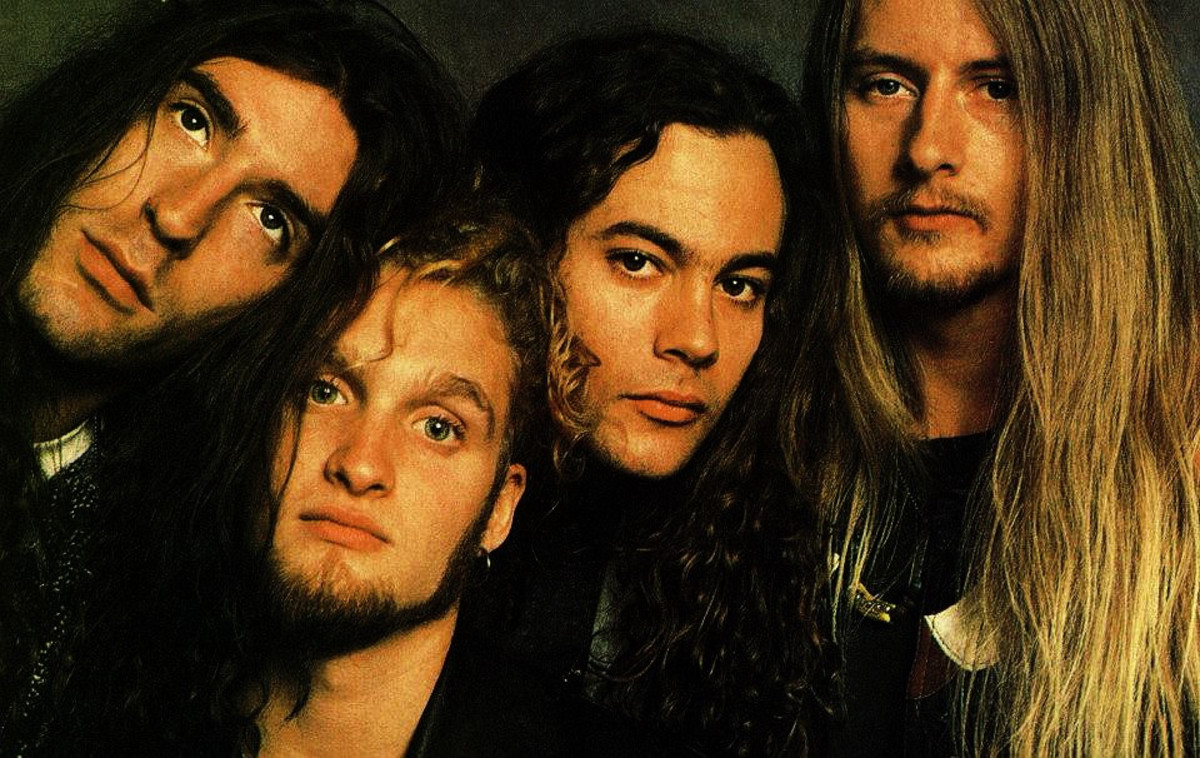The Haunting Confinement of “Man in the Box” by Alice In Chains: A Grunge Anthem Etched in Despair

“Man in the Box” by Alice In Chains isn’t just a song; it’s a visceral, haunting, and undeniably powerful scream that not only defined the early 90s grunge era but also carved a permanent scar into the landscape of rock music. From its opening moments, the track immediately immerses the listener in a world of brooding intensity, a testament to the raw talent and emotional depth of the band.
At its core, “Man in the Box” is built upon Jerry Cantrell’s instantly recognizable and profoundly heavy, brooding guitar riff. This riff isn’t merely a musical phrase; it’s a dark, cyclical motif that sets the oppressive atmosphere, pulling listeners into its gravitational pull. It’s a sonic anchor, laden with a sludgy distortion that became synonymous with the Seattle sound, yet possesses a unique melodicism that hints at the underlying pain. This riff lays the perfect foundation for what is to come – a descent into the depths of human despair.
Elevating this already potent musicality are Layne Staley’s intensely soulful and tormented vocals. Staley’s voice, a force of nature marked by its distinctive wail and guttural power, carries the immense weight of the song’s themes. His delivery is not just singing; it’s an act of emotional exorcism, conveying a profound sense of anguish and desperation that few vocalists could ever match. Every note, every strained inflection, drips with the raw emotion of a soul trapped and suffocating. This vocal performance cemented Staley’s legacy as one of rock’s most compelling and tragic figures.
Staley’s lyrics are where the song truly transcends a mere musical composition, painting vivid, unsettling pictures of confinement, despair, and deceit. The imagery he conjures – “Feed my brain with your lies,” “Buried in my shit,” “Into the flood again, same old trip it was back then” – speaks to a profound sense of entrapment. This isn’t just about physical incarceration; it delves much deeper, into the spiritual restriction and mental anguish of being stuck in a world perceived as full of falsehoods, hypocrisy, and manipulation. The “box” becomes a metaphor for any form of oppression – societal expectations, addiction, personal demons, or even the confines of one’s own mind. The song bravely confronts the uncomfortable truth of human vulnerability and the struggle against unseen forces.
The masterstroke of “Man in the Box” lies in its dynamic contrast: the combination of a slow, heavy, almost dirge-like verse melody that builds gradually, culminating in an explosive, cathartic chorus. This push and pull creates an atmosphere that is both bleak and intensely powerful. The verses build tension, drawing the listener further into the claustrophobic narrative, while the chorus erupts with a raw, guttural cry, releasing a torrent of pent-up emotion. This structural brilliance ensures that the song remains captivating from start to finish, delivering emotional punches with precision and force.
Released as the second single from their debut album Facelift (1990), “Man in the Box” quickly propelled Alice In Chains into the mainstream, becoming one of their most memorable hits and a significant milestone in rock history. It wasn’t just popular; it was critically acclaimed, earning a Grammy nomination for Best Hard Rock Performance. More importantly, it established Alice In Chains as pioneers of a darker, heavier side of grunge – a sound that was less about punk’s raw energy and more about metal’s crushing weight fused with introspective, agonizing lyricism. The song remains a cornerstone of 90s alternative music, a chilling reminder of the emotional depth and raw power that defined an era, and a timeless testament to the haunting genius of Alice In Chains.











